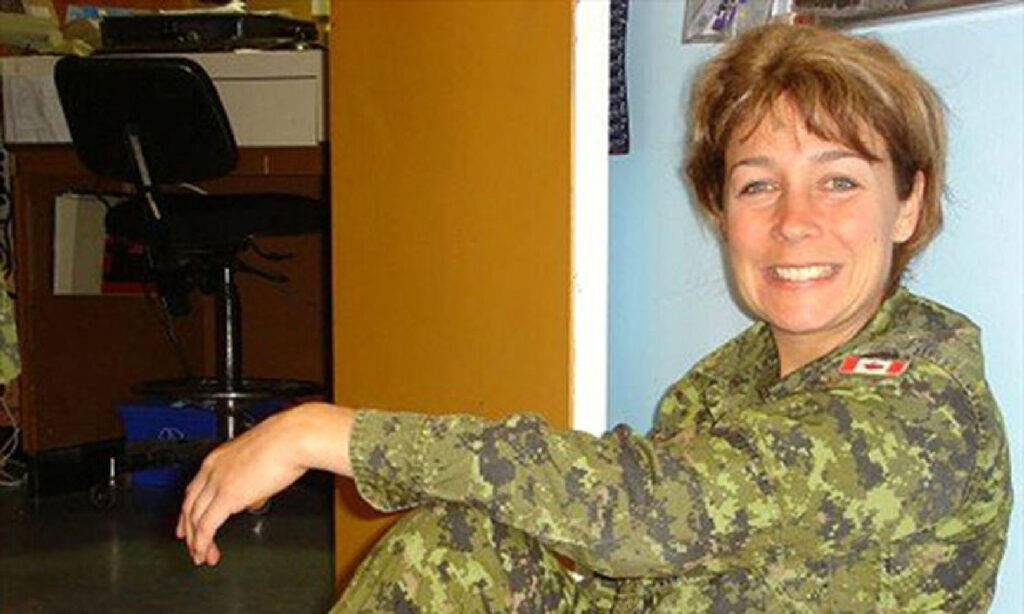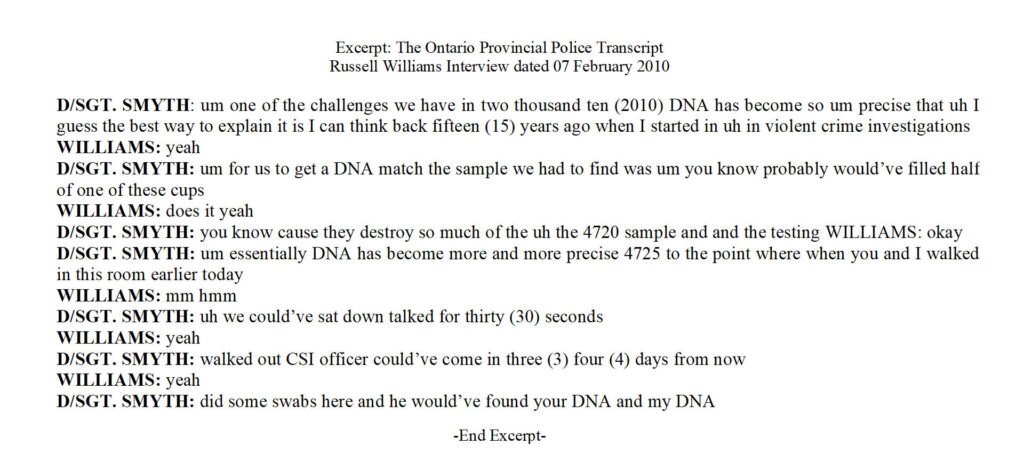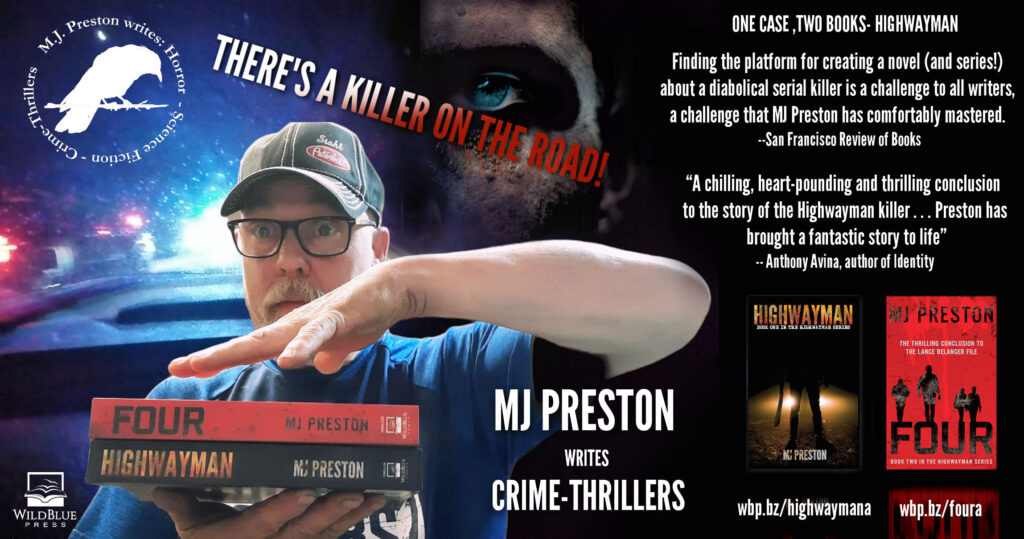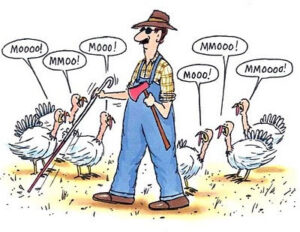PART III – AN IMPRESSION IN MURDER
The Case of Russell Williams a serial killer in the making.
On January 28, 2010, Jessica Lloyd went missing from her home in Belleville, leading the investigators to suspect foul play. Canvassing the neighvborhood for witnesses, police were alerted by a neighbor of a suspicious SUV parked beside Lloyd’s place the night she disappeared. After walking the property surrounding her residence, they discovered tire impressions in the snow and mud. The tire tracks were distinctive enough that investigators decided to set up a highway canvas of vehicle treads using the highway in proximity to Lloyd’s house. Tire impressions are distinctive because every tire wears differently. In addition they also found shoe imprints in the snow.
A week passed since, Lloyd was still missing, and the Ontario Provincial Police set up a canvas of vehicles that regularly ran the highway in proximity to Lloyd’s house. It was a long shot, especially if she was taken by a passing stranger, but the impressions were a solid clue. The canvas ran from 7:00 p.m. on February 4, until 6:00 a.m. February 5, 2010. During the canvas, an officer noted a similar tread pattern on a motorist’s pathfinder. Evidence was gathered and the motorists proceeded on.

What police would discover, is that the pathfinder wasn’t just similar, but matched the tire wear like a fingerprint. The revelation of who the owner of that vehicle was must have given investigators great pause before proceeding.
The driver’s name was, David Russell Williams, a British born Canadian and a serving member of the Canadian Armed Forces. But what must have stalled investigators was that Colonel Russell Williams was the 437 Wing Commander at C.F.B. Trenton, Canada’s largest air force hub. Not only was a commanding officer, but a high profile and decorated pilot who had served overseas and had flown dignitaries, like the Canadian Prime Minister and the Queen of England.
Given that, police had to be sure, but the tire impression matched, and investigators continued gathering evidence. They decided it was time to call Williams in for an interview. They knew they had their man, but wanted to see if they could draw out a confession. Williams was an educated, intelligent man, with over 20 years of military service and training. The detective set to interview Williams was OPP Detective Sergeant Jim Smyth. Smyth was a seasoned investigator, with training as a forensic interviewer, a polygraph examiner, and was certified as a criminal profiler. Smyth had also worked the high-profile abduction/rape-murder of nine-year-old Victoria [Tori] Stafford, which ended with the conviction of Michael Rafferty and his girlfriend Terri-Lynne McClintic. McClintic had procured the child after school and brought her to boyfriend Rafferty who raped the child, and then McClintic murdered Tori with a hammer. A search for Tori’s body was fruitless, McClintic attempted to assit police, but she was not effective in Smyth found Tori Stafford’s body three months after her disappearance.
Smyth was the man for the job. What is clear in the video of the interrogation is that Williams presents himself as friendly, cooperative, and confident. But this is mask. One can only speculate that Williams knew going in, that the police had something. His thoughts possibly harkening back to the canvas where officers checked his tires.
Smyth opens with some small talk, explaining they are interviewing many people, and walks him through his rights to ask for an attorney. He qualifies this by saying, that they are reading everyone interviewed their rights. But then asks if he would like to confer with an attorney which Russell declines. Several techniques are at play in the first stage of the interview. Smyth is mild sounding, not threatening, it is clear he working to build trust. The Hollywood’s good cop/bad cop can’t be found in this room. Smyth might sound meek, it is all an elaborate ruse, Smyth has already started boxing Williams in. Smyth deliberately ignoring Williams’ rank, a deliberate tactic of taking power from the suspect. Not Colonel Williams, but Russell from Tweed. From the interrogation transcript you can see where Williams makes an attempt to steer his interviewer to his authority, but Smyth presents himself as uninterested and moves back toward the case.

The interrogation transcript illustrates where Williams makes a weak attempt to steer his interviewer to his authority, but Smyth shows little interest pushing Williams back toward the case. Smyth asks Williams if he’d be willing to submit to DNA, fingerprinting, and handing over his boots for imprinting.
Incredibly, Williams agrees, and Smyth takes his boots.

A transformation is underway. You might not be able to hear what Williams is thinking, but his body language betrays him. He shifts uncomfortably in his seat as Smyth asks several questions intended to box him in. He outlines that they are not just looking for Jessica Lloyd, but also investigating the murder of a Corporal from Canadian Forces Base Trenton, and two sexual assaults in proximity to Williams’ cabin in Tweed, Ontario.
Two months and three days previous, on Nov 25, 2009, in Brighton, Ontario, Corporal Marie France Comeau, 38, was found sexually assaulted and murdered in her home. Smyth pushes with an almost apologetic tone, wanting to draw out a confession, not send his suspect into lock down. He asks if Williams knows Jessica Lloyd, and most damning, if he’s ever been on her property. Williams fidgets in his seat, his head bobs, and he denies he’s ever been on the property and he is also asked about Marie Francis Comeau and the two women sexually assaulted on his street.

Russell lies that he wasn’t friends with any of them, although “they” had cooperated with police during a neighborhood canvas. They, being he and his wife. This is another attempt to shift the narrative using his wife as tool, to make the investigator focus on him as a married man. Someone who couldn’t possibly be a murderer. But Smyth continues to ignore the bait, and keeps handing Williams rope with which to hang himself. And with every lie, the noose tightens because Smyth is deliberately enabling Williams to lie. Getting “Russ” to lie is exactly what Smyth wants because he has evidence that will knock those lies flat. And though Williams hasn’t seen the evidence, his confident demeanor changes, his arms tightly crossed, his eyes moving down or away when answering questions. What law enforcement refers to as “a tell” of deception. This is another piece of the puzzle validating to investigators that this is their killer.
The mild-mannered Detective Sergeant steps out and returns during the interview, leaving Williams to stew in his thoughts. When he returns, he explains how DNA is going to be a significant part of the four cases they are investigating.

Smyth leaves and returns. His demeanor is that of man who has learned information and is disappointed, but not angry. He states how he has put his best foot forward and tried to be fair, but evidence has come back contradicting Williams’ story. Then he begins knocking down the lies one at a time. He produces the tire tread, explains how those treads are on his “Williams” Pathfinder.

Smyth then produces Williams boot imprint and compares it against the footprint in the snow taken outside Jessica Lloyd’s house. It is an exact match. Williams becomes quiet, and one can only assume what is going through his mind. Panic? Inventory? He picks up the photos looks at them. Then sighs and sets them down. Smyth tells him that they are executing warrants on his residences. There are long periods of silence, which Smyth uses effectively to break Williams down. Russell Williams knows his secret world of rape and murder are now being brought out of the obscurity into the light. He has been exposed, and there’s not one thing he can do about it.
There are multiple gaps of silence. The silence is used by Smyth, and incredibly, in the video of the interview he mimics many of Williams’ mannerisms through the reticence. Williams places a hand against his cheek, so does Smyth, Williams sighs, so does Smyth. Smyth is projecting, I know this is bad, but I’m trying to be your friend here. He asks Williams what he’s thinking, what he can do your Williams. Williams says he’s concerned about his wife and how to he wants to minimize the impact on her. Detective Sergeant Jim Smyth sees the opportunity and ceases it.

Williams provides the location of Lloyd’ body and investigators recover her the next morning. He also gives details about the crimes, which he’d videotaped and photographed. Further to the rape and murder, Williams had broken into 82 residences stealing lingerie, and photographing himself wearing it. Some of that clothing from prepubescent girls. On one nine-year-old’s computer he left her a note saying thank you.
The murders of Comeau and Lloyd had involved blunt force trauma then death by asphyxiation. Comeau’s last words were, “Have a heart, I want to live,” before Williams struck her with a flashlight then strangled her. He killed Lloyd using the same technique after telling her he was going to take her home. He repeatedly raped both women before murdering them, and there were the women who survived. They were left in terror of their attacker who broke into their homes and sexually assaulted and photographed them.
Williams said that he killed both women because they posed a risk of identifying him. But Williams meticulous record keeping, trophies, and photographic and video evidence left him little room. He confessed to his crimes and is incarcerated in the Port-Cartier Institution in Port Cartier, Quebec. He is a dangerous offender, which makes him ineligible for the faint hope clause, a legal appeal afforded to criminals facing life sentences.
Russell Williams was a case I looked at closely because it is so unusual. Williams is considered at serial rapist, and a multiple murderer, but he does not fit the category of serial killer because he only killed two people. However, there is no doubt that he was well on his way. What also drew me to this killer is that he was the base commander of a unit, that was home to many friends whom I’d formerly served with, but more disturbing, my oldest son had served under Colonel Russell’s command.
There were references to Williams’ military career on the CBC news program The Fifth Estate.
As a forensic psychologist watches the interview, he draws a correlation between Williams’ military training and his ability to compartmentalize the murders of Comeau and Lloyd. In my opinion the connection is frivolous. While I do not hold a degree in psychology, my extensive research of these monsters sees this as a similar trait shared by most multiple sex murderers. They view their victims as objects rather than people. They are driven by a need and they disconnect themselves from the crime. Referencing the air force and the discipline of serving as some connection to Williams’ ability to kill without remorse is a reach. The air force isn’t under the strict constraints of discipline you will find in an Army unit. Officers and regular ranks often work on a first name basis. As Russell Williams was a pilot, he would be on a first name basis with the crews who made sure his airplane was flight-worthy.
The truth is most serial killers lack empathy and are driven to kill by a need for possession and domination of their victims. In Williams case, that need amalgamated sex and murder into the same thing. The media draw might be to the Killer Colonel, but he was no different than any other deviant of society who has ability to kill without remorse. I suspect that Russell Williams harbored these dark thoughts for quite some time before he acted on them and would say that the only connection to his military service was that he seemed an unlikely suspect because of his status.
The outstanding work of investigators on this case not only stopped a murderer and confirmed serial rapist, but also a serial killer in the making.
I’m MJ Preston, thanks for dropping by for another Research of True Crime in the Highwayman Files.
MJ Preston is the author of the HIGHWAYMAN Crime Series. available in print, digital and as an audio book from WildBlue Press

Below is a link to watch the Fifth Estate – Russell Williams – The Confession



